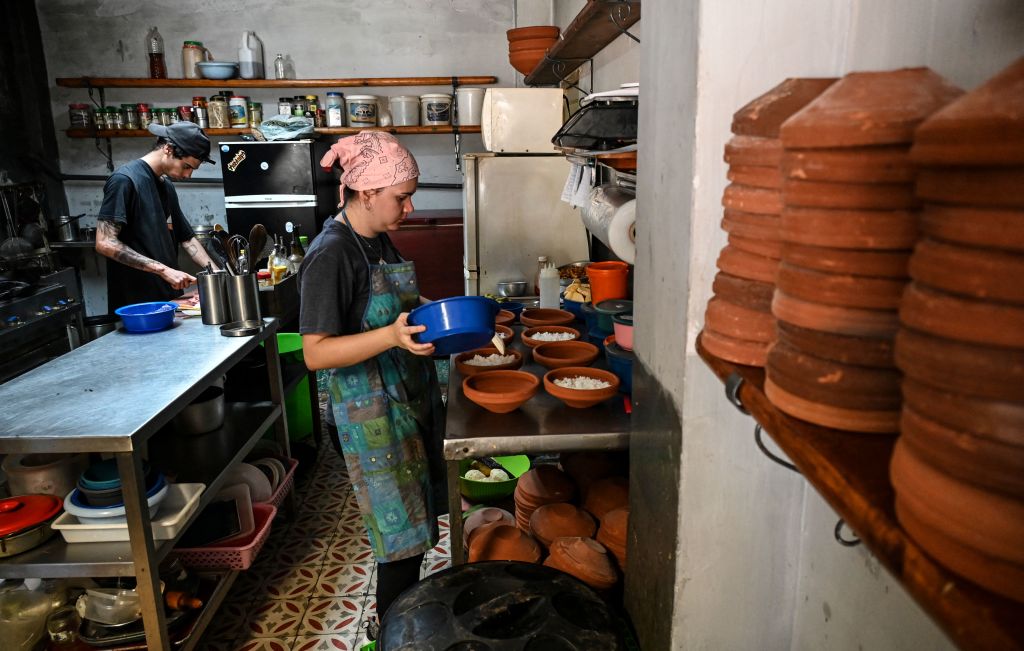The Upside of Helping Cuba’s Private Sector

The number of people fleeing Cuba in the past two years has been truly astonishing. Some 350,000 Cubans have attempted to enter the United States since October 2021, according to U.S. government data, a number equivalent to about 3% of the island’s population, and that surely understates the actual figure.
A closer look at who is leaving paints an even bleaker picture. A majority of migrants are working-age adults, and the majority of them had worked in Cuba’s private sector, according to recently released estimates from the Cuban government. The state sector’s share of total employment rose from 69.6% to 72.3% from 2020 to 2022, since 84% of the decline in the labor force was from the private sector; this represents a reversal of the trend during the prior decade. Put another way: Cuba lost almost 5% of its labor force in two years, and 13% of some of its most productive citizens.
Cuba’s private sector has struggled for a variety of reasons, especially the restrictive policies of the Cuban government. But a Biden administration package of regulations that could strengthen the Cuban private sector remains stalled in Washington, which seems like a lost opportunity to address a major factor pushing people to migrate to the United States. Here is the current situation and one (hopeful) scenario:
In May, 2022, the Biden administration announced a series of measures to support the Cuban private sector, including expanding the access of Cuban entrepreneurs to cloud technologies, e-commerce and electronic payment platforms. There were also mentions of microfinancing and training resources. None of the measures have been implemented to date, reportedly due to legal issues in the U.S.—specifically, difficulties in carving out commercial exceptions for private actors without running afoul of blanket restrictions under the Helms-Burton Act of 1996.
The administration’s initiatives came nearly a year after the Cuban government allowed for the incorporation of private businesses on the island. Until then, approximately half a million private businesses in Cuba operated under licenses to engage in specific activities, but they had no legal status, which largely limited their ability to contract with the larger state sector and to create ownership wealth for their founders and workers.
The new companies are generally referred to as MIPYMES (the Spanish acronym for micro, small and medium businesses). Their legal structure, called sociedades de responsabilidad limitada, or SRLs, in the Spanish acronym, are similar in concept to limited liability companies (LLCs) in the United States and include socios — members who are owners.
The SRLs can employ between three and 100 employees and can operate in any sector except for 124 excluded activities specified by the Cuban government (including defense/security, media, health, education and many professional services). Approximately 8,000 SRLs have been established, employing well over 100,000 people. In certain sectors such as logistics (especially the importation of consumer goods) and software development, there are SRLs with several million dollars in revenues, taking market share from inefficient and unprofitable state entities. In terms of the absolute numbers of SRLs, many are in the tourism sector, which has been depressed due to COVID-19 and other factors during the last several years, but is now gradually recovering.
An example of the scale that the SRLs are achieving is their importing of $167 million in products during the first four months of 2023, according to official Cuban government data. (They cannot import directly without a state entity in the middle, but it has become routine to pay a small commission for this service.)
Notwithstanding the promising start for the MIPYMES, they will need more time and, importantly, access to capital, to have a major impact on private sector employment and emigration. The economic forces driving Cuban emigration of private sector workers during the last two years—scarcity of inputs, currency distortions, lack of capital, high taxes—have dominated individual decision-making. The new MIPYMES are a real emerging force, but the overall economic environment has been so dismal that it did not meaningfully impact emigration during this period.
That could change, if there were a fortuitous (though unlikely, in the near term) combination of developments: if the Biden administration package of private sector measures is implemented, and if there is further relaxation of rules on the Cuban side, in particular allowing U.S. investors to invest in the MIPYMES (currently, members of SRLs must be Cuban nationals resident in Cuba). Whereas most U.S. investors would not consider Cuba under any circumstances, members of the diaspora who trust the founders of an SRL have a different risk appetite, and some may have a philanthropic motivation as well.
Considering what the Cuban government has offered the Russian business sector in the last month—land leases for 30 years, hard currency profit repatriation, certain import tariff exemptions—asking the Cubans to allow foreign investment into the MIPYME sector may not be far-fetched. Greater capital formation in Cuba would not only raise living standards generally, it could also entice some of its more productive citizens to stay.
John McIntire is the chairman of the Cuba Emprende Foundation and a director of the Cuba Study Group.
This op-ed was originally published in Americas Quarterly on June 26, 2023.
VIEW ORIGINAL ARTICLE